I want to display 3-bit binary on 4-digit 7 segment display with appropriate switch pressed. For eg :- if switch positon is 001(switch2-off switch1-off switch0-on) then i want to display 001 on 7 segment display. Im doing this using VHDL. Tried multiplexing but still not working. Below is the code.
entity test is
Port(Seg_AN :out std_logic_vector(3 downto 0);
Seg7 :out std_logic_vector(6 downto 0);
SWITCH :in std_logic_vector(2 downto 0);
CLK :in std_logic
);
end test;
architecture Behavioral of test is
signal sel :natural range 0 to 8;
signal anode_sel :std_logic_vector(2 downto 0);
-- signal number :std_logic_vector(2 downto 0);
constant c_cnt_200hz :natural := 87500;
-- constant c_cnt_1hz :natural := 17500000;
signal r_cnt_200hz :natural range 0 to c_cnt_200hz;
-- signal r_cnt_1hz :natural range 0 to c_cnt_1hz;
signal anode :std_logic_vector(2 downto 0);
signal segment :std_logic_vector(6 downto 0);
-- signal digit :std_logic;
begin
process(CLK)
begin
if rising_edge(CLK) then
if r_cnt_200hz = c_cnt_200hz - 1 then
r_cnt_200hz <= 0;
if sel = 8 then
sel <= 0;
else
sel <= sel + 1;
end if;
else
r_cnt_200hz <= r_cnt_200hz + 1;
end if;
end if;
end process;
process(sel)
begin
case sel is
when 1 => anode_sel <= "001";
when 2 => anode_sel <= "010";
when 3 => anode_sel <= "100";
when 4 => anode_sel <= "011";
when 5 => anode_sel <= "101";
when 6 => anode_sel <= "110";
when others => anode_sel <= "111";
end case;
anode <= not anode_sel;
end process;
process(anode)
begin
if SWITCH(0)='1' or SWITCH(1)='1' or SWITCH(2)='1' then
segment <= "1111001";
else
segment <= "1000000";
end if;
end process;
Seg_AN <= '1' & anode;
Seg7 <= segment;
end Behavioral;
